Pig Liver Esterases Hydrolyze Endocannabinoids and Promote Inflammatory Response
- PMID: 34079552
- PMCID: PMC8165269
- DOI: 10.3389/fimmu.2021.670427
Pig Liver Esterases Hydrolyze Endocannabinoids and Promote Inflammatory Response
Abstract
Endocannabinoids are endogenous ligands of cannabinoid receptors and activation of these receptors has strong physiological and pathological significance. Structurally, endocannabinoids are esters (e.g., 2-arachidonoylglycerol, 2-AG) or amides (e.g., N-arachidonoylethanolamine, AEA). Hydrolysis of these compounds yields arachidonic acid (AA), a major precursor of proinflammatory mediators such as prostaglandin E2. Carboxylesterases are known to hydrolyze esters and amides with high efficiency. CES1, a human carboxylesterase, has been shown to hydrolyze 2-AG, and shares a high sequence identity with pig carboxylesterases: PLE1 and PLE6 (pig liver esterase). The present study was designed to test the hypothesis that PLE1 and PLE6 hydrolyze endocannabinoids and promote inflammatory response. Consistent with the hypothesis, purified PLE1 and PLE6 efficaciously hydrolyzed 2-AG and AEA. PLE6 was 40-fold and 3-fold as active as PLE1 towards 2-AG and AEA, respectively. In addition, both PLE1 and PLE6 were highly sensitive to bis(4-nitrophenyl) phosphate (BNPP), an aryl phosphodiester known to predominately inhibit carboxylesterases. Based on the study with BNPP, PLEs contributed to the hydrolysis of 2-AG by 53.4 to 88.4% among various organs and cells. Critically, exogenous addition or transfection of PLE6 increased the expression and secretion of proinflammatory cytokines in response to the immunostimulant lipopolysaccharide (LPS). This increase was recapitulated in cocultured alveolar macrophages and PLE6 transfected cells in transwells. Finally, BNPP reduced inflammation trigged by LPS accompanied by reduced formation of AA and proinflammatory mediators. These findings define an innovative connection: PLE-endocannabinoid-inflammation. This mechanistic connection signifies critical roles of carboxylesterases in pathophysiological processes related to the metabolism of endocannabinoids.
Keywords: Carboxylesterases; arachidonic acid; endocannabinoid; inflammation; pig liver esterase; prostaglandins.
Copyright © 2021 Zhou, Yan, Sun, Chen, Xiao, Xiao, Wang and Shi.
Conflict of interest statement
The authors declare that the research was conducted in the absence of any commercial or financial relationships that could be construed as a potential conflict of interest.
Figures
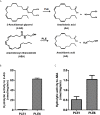
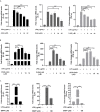
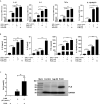
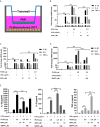


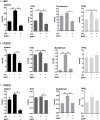
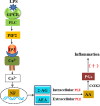
Similar articles
-
Pig liver esterases PLE1 and PLE6: heterologous expression, hydrolysis of common antibiotics and pharmacological consequences.Sci Rep. 2019 Oct 29;9(1):15564. doi: 10.1038/s41598-019-51580-4. Sci Rep. 2019. PMID: 31664043 Free PMC article.
-
Inactivation of lipid glyceryl ester metabolism in human THP1 monocytes/macrophages by activated organophosphorus insecticides: role of carboxylesterases 1 and 2.Chem Res Toxicol. 2010 Dec 20;23(12):1890-904. doi: 10.1021/tx1002194. Chem Res Toxicol. 2010. PMID: 21049984 Free PMC article.
-
Lipopolysaccharide suppresses carboxylesterase 2g activity and 2-arachidonoylglycerol hydrolysis: A possible mechanism to regulate inflammation.Prostaglandins Other Lipid Mediat. 2015 Sep;121(Pt B):199-206. doi: 10.1016/j.prostaglandins.2015.09.005. Epub 2015 Sep 25. Prostaglandins Other Lipid Mediat. 2015. PMID: 26403860 Free PMC article.
-
Endocannabinoid degradation, endotoxic shock and inflammation.Curr Drug Targets Inflamm Allergy. 2002 Mar;1(1):53-63. doi: 10.2174/1568010023344878. Curr Drug Targets Inflamm Allergy. 2002. PMID: 14561206 Review.
-
COX-2-derived endocannabinoid metabolites as novel inflammatory mediators.Trends Pharmacol Sci. 2014 Jun;35(6):284-92. doi: 10.1016/j.tips.2014.03.001. Epub 2014 Mar 29. Trends Pharmacol Sci. 2014. PMID: 24684963 Review.
Cited by
-
Mammalian Esterase Activity: Implications for Peptide Prodrugs.Biochemistry. 2024 Oct 15;63(20):2580-2593. doi: 10.1021/acs.biochem.4c00446. Epub 2024 Oct 3. Biochemistry. 2024. PMID: 39359146 Free PMC article.
-
The Effects of Endogenous Cannabinoids on the Mammalian Respiratory System: A Scoping Review of Cyclooxygenase-Dependent Pathways.Cannabis Cannabinoid Res. 2023 Jun;8(3):434-444. doi: 10.1089/can.2022.0277. Epub 2023 Apr 19. Cannabis Cannabinoid Res. 2023. PMID: 37074668 Free PMC article.
-
Carboxylesterase 1d Inactivation Augments Lung Inflammation in Mice.ACS Pharmacol Transl Sci. 2022 Sep 12;5(10):919-931. doi: 10.1021/acsptsci.2c00098. eCollection 2022 Oct 14. ACS Pharmacol Transl Sci. 2022. PMID: 36268116 Free PMC article.
-
Isolation and Characterization of Two Pseudorabies Virus and Evaluation of Their Effects on Host Natural Immune Responses and Pathogenicity.Viruses. 2022 Mar 29;14(4):712. doi: 10.3390/v14040712. Viruses. 2022. PMID: 35458442 Free PMC article.
-
Compared Inhibitory Activities of Tamoxifen and Avenanthramide B on Liver Esterase and Correlation Based on the Superimposed Structure Between Porcine and Human Liver Esterase.Int J Mol Sci. 2024 Dec 11;25(24):13291. doi: 10.3390/ijms252413291. Int J Mol Sci. 2024. PMID: 39769055 Free PMC article.
References
-
- Yan B. Hydrolytic Enzymes in Metabolism of Drugs and Other Xenobiotics. In: P Anzenbacher, UM Zanger, editors. Weinheim: WILEY-VCH Verlag GmbH & Co. KGaA; (2013). p. 165–98.
-
- Qiao Q, Bouwman FG, van Baak MA, Roumans NJT, Vink RG, Coort SLM, et al. . Adipocyte Abundances of CES1, Cryab, ENO1 and GANAB are Modified in-Vitro by Glucose Restriction and are Associated With Cellular Remodelling During Weight Regain. Adipocyte (2019) 8:190–200. 10.1080/21623945.2019.1608757 - DOI - PMC - PubMed
Publication types
MeSH terms
Substances
Grants and funding
LinkOut - more resources
Full Text Sources
Miscellaneous

